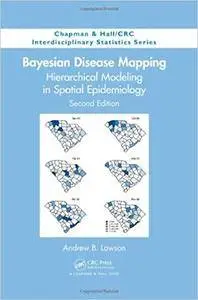Andrew B. Lawson, "Bayesian Disease Mapping: Hierarchical Modeling in Spatial Epidemiology, Second Edition"
2013 | ISBN-10: 1466504811 | 396 pages | PDF | 18 MB
2013 | ISBN-10: 1466504811 | 396 pages | PDF | 18 MB
Since the publication of the first edition, many new Bayesian tools and methods have been developed for space-time data analysis, the predictive modeling of health outcomes, and other spatial biostatistical areas. Exploring these new developments, Bayesian Disease Mapping: Hierarchical Modeling in Spatial Epidemiology, Second Edition provides an up-to-date, cohesive account of the full range of Bayesian disease mapping methods and applications. A biostatistics professor and WHO advisor, the author illustrates the use of Bayesian hierarchical modeling in the geographical analysis of disease through a range of real-world datasets.
New to the Second Edition
Three new chapters on regression and ecological analysis, putative hazard modeling, and disease map surveillance
Expanded material on case event modeling and spatiotemporal analysis
New and updated examples
Two new appendices featuring examples of integrated nested Laplace approximation (INLA) and conditional autoregressive (CAR) models
In addition to these new topics, the book covers more conventional areas such as relative risk estimation, clustering, spatial survival analysis, and longitudinal analysis. After an introduction to Bayesian inference, computation, and model assessment, the text focuses on important themes, including disease map reconstruction, cluster detection, regression and ecological analysis, putative hazard modeling, analysis of multiple scales and multiple diseases, spatial survival and longitudinal studies, spatiotemporal methods, and map surveillance. It shows how Bayesian disease mapping can yield significant insights into georeferenced health data. WinBUGS and R are used throughout for data manipulation and simulation.



